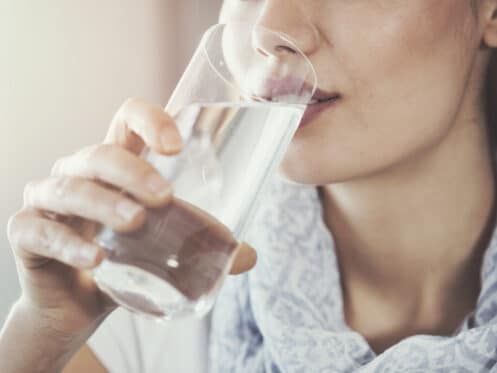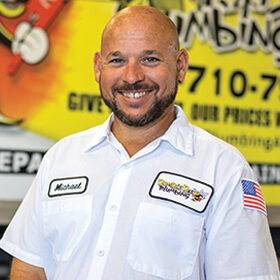When your water looks clear, you might think everything is fine. Still, clarity doesn’t necessarily mean quality. Trace contaminants, hard minerals, and chemical byproducts can all slip past your basic tap filters or refrigerator dispensers. That’s where a whole-house filtration system changes the game. It treats every drop, rather than just what you drink, before it moves through your home.
With Bumble Bee Plumbing in Glendale, AZ, you can explore long-term water solutions built to handle local challenges without sacrificing convenience. If you’ve ever wondered whether a system like this is worth it, here’s what you need to know before making that call.
Why Your Water May Not Be as Clean as It Looks
Even if your water runs clear and smells fine, there’s still a chance it’s carrying particles you can’t see. Most tap water in the U.S. goes through treatment, but that doesn’t mean it’s perfectly clean by the time it reaches your home.
Along the way, it can pick up traces of sediment, chlorine byproducts, rust, agricultural runoff, and in some areas, low levels of arsenic or lead. Local water systems may meet federal standards while still delivering water that affects your home, health, and plumbing in small but cumulative ways.
A single under-sink filter or a filtered fridge dispenser might catch some of it, but it won’t treat the water in your shower, your laundry room, or your dishwasher. That means your skin, clothes, and appliances still interact with untreated water every day. A whole-house water filtration system works differently. It intercepts the water as it enters the home, removing contaminants before they have the chance to move through your pipes or your body.
How a Whole-House System Works
Whole-house filtration systems are typically installed at the point where water enters your home, right after the main shut-off valve. That gives the system full control over what enters your plumbing. Most setups include a multi-stage filter, with components that trap sediment, neutralize chlorine, and target chemical or biological contaminants depending on your local water source. Some setups also include UV purification or carbon block filters for additional disinfection.
Once installed, every faucet, shower, toilet, and appliance benefits. You won’t need to remember to change multiple filters throughout your home. And because the filtration happens before the water is distributed, you get consistent results across every tap. If you’re already using a water softener, many systems can be paired with your existing setup to improve both taste and function without removing healthy minerals.
The Long-Term Impact on Plumbing
Hard minerals like calcium and magnesium can settle in pipes and fixtures, reducing flow and shortening the life of appliances. Chlorine and chloramine, both commonly used for disinfection, can also corrode rubber seals and fittings inside your dishwasher, washing machine, or water heater.
A whole-house filtration system removes many of those stressors. That helps reduce scaling, rust stains, and corrosion throughout your home’s pipes. It can also help your water heater operate more efficiently by preventing sediment from building up at the bottom of the tank.
Better Skin, Hair, and Clothing Health
Filtered water doesn’t just protect your pipes. It can also be gentler on your skin. If you’ve ever stepped out of the shower feeling itchy or noticed your shampoo doesn’t lather well, your water quality might be the reason. Too much chlorine can dry out your skin and make it feel irritated, especially if it’s already sensitive. If your home has hard water, the minerals can clog your pores, dull your hair color, and leave behind a filmy layer that makes your skin look less fresh.
Laundry can also be affected by water quality. Hard water makes detergents less effective, forcing you to use more just to get clothes clean. Over time, fabric can feel stiff or worn before its time. A filtration system can reduce those harsh minerals and chemicals so that your skin feels softer, your hair looks healthier, and your clothes last longer.
What Maintenance Looks Like After Installation
Once installed, a whole-house filtration system doesn’t take much effort to keep up with. Most models just need a new filter every 6 to 12 months, depending on your water and the system you’re using. Swapping out the cartridges is usually quick and something you can do yourself. Some systems even have a bypass valve that lets you do maintenance without turning off your water.
It’s also a smart idea to have a plumber check things out once a year. They can take a look at the filter housing, flush the system if needed, and inspect any extra parts like a softener or UV light to make sure everything’s working like it should.
Book Your Water Filtration System Consultation Today
A whole-house water filtration system doesn’t just make water taste better. It protects your pipes, appliances, and skin, and helps reduce your exposure to the invisible stuff that slips through most point-of-use filters. For households dealing with hard water buildup, strange tap odors, or sensitive skin, this upgrade can make day-to-day life more comfortable and your plumbing more reliable. Bumble Bee Plumbing also provides plumbing inspections and water softener services for a more complete approach to long-term home maintenance. Book your consultation today.



